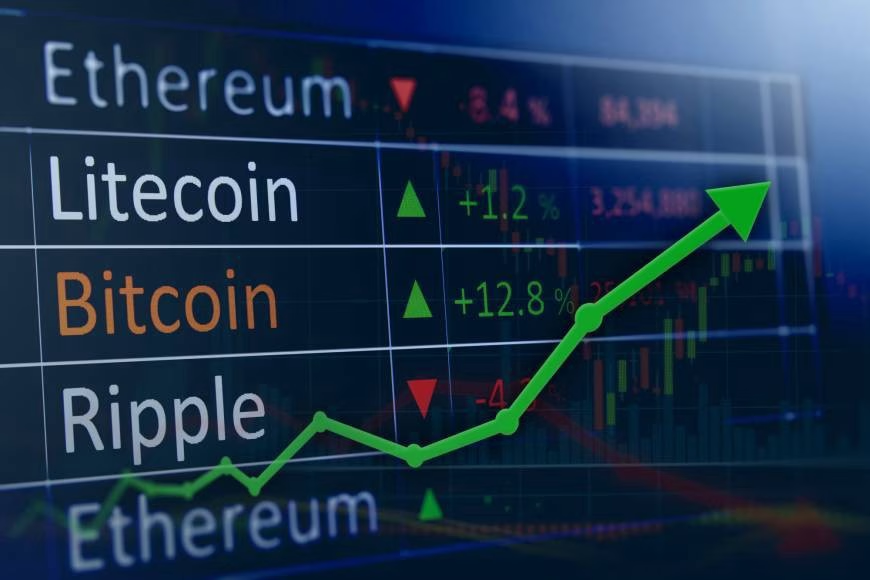All about celsius crypto
Make sure to research your country’s cryptocurrency regulations, focusing on taxation and trading permissions. To avoid unsafe crypto trading, go for cryptocurrency exchanges that comply with the financial laws in your jurisdiction https://alimentos-carbohidratos.com/slots/dwarfs-gone-wild/. It’s also important to make sure you keep records of all trades, withdrawals, and deposits for tax filing purposes.
Production costs: Crypto miners rely on costly equipment that consumes considerable energy. As the cost of mining coins increases, so can the coin’s value. Conversely, if miners cannot cover their costs, the value of a coin may decrease.
Centralized Exchanges (CEX): Platforms like Binance, Coinbase, and Kraken act as intermediaries in your transactions.They’re user-friendly and ideal for beginners, offering resources and customer support. They are often insured and are more resistant to large-scale hacks.
Asking that question and others is essential if you want to avoid some of the common pitfalls of crypto investing. Even if you’re knowledgeable about investing in stocks and other asset classes, there are some things about crypto trading and the cryptocurrency market that are unique and may take some time to understand.
The issue of insurance is one that looms large. Some crypto exchanges are not covered by the FDIC at all, even if users have uninvested holdings in US dollars. Some store user’s funds at offsite banks that are protected by the government.
All about crypto trading
Cryptocurrency purchases are also secured via cryptography, which creates inalterable activity records. Many businesses have begun using cryptocurrency in business transactions because of the lower fees and potential for more streamlined contracts. Because of this, knowledge of cryptocurrency trading may have the potential to open new career opportunities in businesses looking to expand their use of crypto trading.
Crypto trading strategies will vastly differ from person to person based on expertise, preference, personality, available trading capital and risk tolerance. Plus, there are many advanced crypto trading techniques traders discover once they’ve mastered the basics of how to trade Bitcoin or other cryptocurrencies.
While both approaches help you determine if the purchase is worthwhile, they focus on different factors: performance data and the car’s intrinsic worth. Now, let’s understand these differences in the cryptocurrency context:

Cryptocurrency purchases are also secured via cryptography, which creates inalterable activity records. Many businesses have begun using cryptocurrency in business transactions because of the lower fees and potential for more streamlined contracts. Because of this, knowledge of cryptocurrency trading may have the potential to open new career opportunities in businesses looking to expand their use of crypto trading.
Crypto trading strategies will vastly differ from person to person based on expertise, preference, personality, available trading capital and risk tolerance. Plus, there are many advanced crypto trading techniques traders discover once they’ve mastered the basics of how to trade Bitcoin or other cryptocurrencies.
What is crypto all about
You can benefit from several advantages of using crypto over traditional money. From its ease of use to its availability and security, cryptocurrency has become a viable alternative to traditional money by offering users new and unique features. They include:
In 1983, American cryptographer David Chaum conceived of a type of cryptographic electronic money called ecash. Later, in 1995, he implemented it through Digicash, an early form of cryptographic electronic payments. Digicash required user software in order to withdraw notes from a bank and designate specific encrypted keys before they could be sent to a recipient. This allowed the digital currency to be untraceable by a third party.
On a blockchain, mining is the validation of transactions. For this effort, successful miners obtain new cryptocurrency as a reward. The reward decreases transaction fees by creating a complementary incentive to contribute to the processing power of the network. The rate of generating hashes, which validate any transaction, has been increased by the use of specialized hardware such as FPGAs and ASICs running complex hashing algorithms like SHA-256 and scrypt. This arms race for cheaper-yet-efficient machines has existed since bitcoin was introduced in 2009. Mining is measured by hash rate, typically in TH/s. A 2023 IMF working paper found that crypto mining could generate 450 million tons of CO2 emissions by 2027, accounting for 0.7 percent of global emissions, or 1.2 percent of the world total

You can benefit from several advantages of using crypto over traditional money. From its ease of use to its availability and security, cryptocurrency has become a viable alternative to traditional money by offering users new and unique features. They include:
In 1983, American cryptographer David Chaum conceived of a type of cryptographic electronic money called ecash. Later, in 1995, he implemented it through Digicash, an early form of cryptographic electronic payments. Digicash required user software in order to withdraw notes from a bank and designate specific encrypted keys before they could be sent to a recipient. This allowed the digital currency to be untraceable by a third party.
On a blockchain, mining is the validation of transactions. For this effort, successful miners obtain new cryptocurrency as a reward. The reward decreases transaction fees by creating a complementary incentive to contribute to the processing power of the network. The rate of generating hashes, which validate any transaction, has been increased by the use of specialized hardware such as FPGAs and ASICs running complex hashing algorithms like SHA-256 and scrypt. This arms race for cheaper-yet-efficient machines has existed since bitcoin was introduced in 2009. Mining is measured by hash rate, typically in TH/s. A 2023 IMF working paper found that crypto mining could generate 450 million tons of CO2 emissions by 2027, accounting for 0.7 percent of global emissions, or 1.2 percent of the world total

